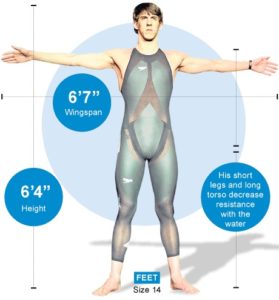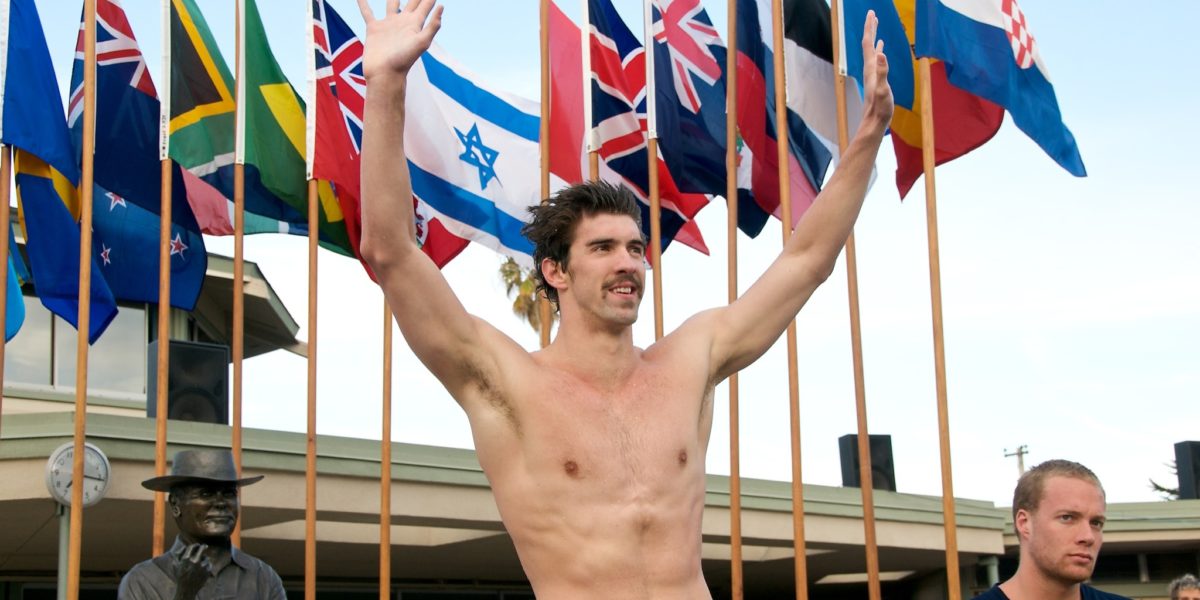Usain Bolt, Michael Jordan, and Wayne Gretzky are arguably some of the greatest athletes of all time. You watch them on the television breaking record, winning titles or making impossible shots, and you can’t help to wonder, how are they that good? Do they use some secret training method, maybe even a special diet? Possibly, they are genetically gifted?
Sports author David Epstein tackles this debate of training versus genetics in his book, “The Sports Gene”. Yes, athletes need to practice to become good, but some are just going to be naturally better than others. If you are 5’6” inches you are going to have to practice dunking a basketball a lot longer than someone who 6’6”. To see how some athletes are naturally better than others lets look at some talented athletes and see what makes them biomechanical specimens. First, we’ll look at Michael Phelps, an American swimmer who not only has multiple world records but also the most decorated Olympian of all time with 28 Olympic medals.
For swimmers, biomechanics have found the ideal body for performance. Body features that have been found helpful for swimming is a long torso and long arms. The long torso reduces the drag on the swimmer and long arms allow for more powerful strokes. Michael Phelps’, who is 6’4”, has the torso proportions of someone who is 6’8” and the leg proportions of someone who is 5’9”, giving him an extremely high torso-to-leg ratio. Not only is Phelps’ torso long, but he also has a long wingspan, measured at 6’7”. Along with Phelps’ unreal proportions, his feet are another huge advantage when it comes to swimming. His size 14 feet help place more force into the water when he kicks. This is a benefit because 90% of a swimmer’s thrust comes from their feet. His ankles also hyperextend 15-degree when he kicks, creating more force. Biomechanically, Michael Phelps’s is a walking fish.

You might be wondering, what would happen if you took someone who has trained to mastery and put them up against someone who is just perfectly gifted. David Epstein mentions this scenario in his book a battle between training and genetics. In the 2007 world high jump final, there are two jumpers left, Stefan Holm and Donald Thomas. Stefan Holm, has a personal best of 7’10.5”, only 2 inches off the world record. Holm has been training most of his life, since he was a child and even won the previous Olympic High Jump final. He is also 5’10” tall, which is very small for a high jumper. Donald Thomas, has a personal best of 7’8.5”. Thomas, on the other hand, is 6’3” and has been jumping for a little over a year and had started high jumping because of a bet with a friend. The two finish the completion and Thomas won clearing a 7’8.5” bar. Even though Holm’s technique was near perfect, Thomas just had the athletic edge. Being taller, Thomas already had a higher center of gravity meaning he had to travel less distance to get over the bar. Thomas also had much longer legs and Achilles tendon. This allows him to store and transfer much more energy into a jump. Thomas was just made to win.
For more information:
Michael Phelps: The man who was built to be a swimmer
Featured image cropped from “Michael Phelps” by jdlasica which is licensed under CC BY 2.0.
